Curing plantar fasciitis, a common condition causing heel pain due to inflammation of the plantar fascia ligament, can be achieved in a week with targeted actions.
Massage your feet

Massaging your feet plays a crucial role in treating plantar fasciitis. It helps alleviate pain and enhances blood flow, aiding the healing process.
Effective Massage Techniques for Plantar Fasciitis
Use a Tennis Ball: Roll a tennis ball under your foot to loosen tight calf muscles and the plantar fascia.
Manual Massage: Gently massage the affected foot, focusing on the arch and heel bone area.
Benefits of Regular Foot Massage
Pain Relief: Helps in reducing plantar fasciitis pain and chronic pain.
Increased Blood Flow: Enhances healing by improving circulation.
Best Time for Foot Massage
Perform massage before bed or after activities to maximize pain relief.
Bullet List for Effective Foot Massage:
Roll a tennis ball underfoot.
Manually massage the painful areas.
Focus on times of rest or post-activity for massage.
Common Misconceptions About Plantar Fasciitis

Debunking myths about how to cure plantar fasciitis in one week is key to understanding and effectively treating the condition.
Myths vs. Facts About Plantar Fasciitis
It’s Just Heel Pain: Plantar fasciitis affects the entire foot, not just the heel.
Surgery as the Only Option: Non-surgical treatments like stretching exercises and wearing supportive footwear are often effective.
Understanding the Nature of Plantar Fasciitis
Causes Beyond Physical Activity: Factors like flat feet and improper footwear contribute to the development of plantar fasciitis.
Healing Time Varies: While some may heal in one week, others may take longer.
Importance of Proper Footwear
Wearing shoes with good arch support and cushioning is crucial for treatment and prevention.
Bullet List for Avoiding Misconceptions:
Recognize the full impact of plantar fasciitis.
Explore non-surgical treatment options.
Understand various contributing factors.
How can I treat plantar fasciitis in a week at home?

Treating plantar fasciitis at home involves a combination of rest, exercises, and proper foot care to alleviate pain and cure plantar fasciitis effectively.
Home Treatment Strategies for Plantar Fasciitis
Stretching Exercises: Regular stretching of the calf muscles and plantar fascia can significantly reduce pain.
Cold Therapy: Apply an ice pack to the affected area to reduce inflammation and relieve pain.
Lifestyle Adjustments for Quick Recovery
Footwear Choices: Choose footwear with adequate arch supports to reduce stress on the plantar fascia.
Weight Management: Maintaining a healthy weight lessens the strain on your feet.
Incorporating Strengthening Exercises
Engage in exercises to strengthen foot and calf muscles, aiding in the prevention of plantar fasciitis recurrence.
Bullet List for Home Treatment:
Perform daily stretching exercises.
Apply cold therapy regularly.
Opt for supportive and suitable footwear.
Maintain a healthy weight for foot health.
RICE (Rest, Ice, Compression, Elevation)

Treating plantar fasciitis effectively often involves the RICE method, a well-established approach in reducing pain and inflammation.
Rest: The First Step in Healing
Minimize Activities: Reduce activities that put stress on your feet, especially those that exacerbate heel pain.
Avoid Aggravating Surfaces: Walking on hard surfaces can worsen plantar fasciitis symptoms.
Ice: Reducing Inflammation and Pain
Apply Ice Packs: Regular application of ice packs to the affected foot helps in reducing inflammation and provides pain relief.
Frequency of Application: Apply ice for 15-20 minutes, several times a day, especially after activities that strain the foot.
Compression: Supporting the Affected Area
Use Compression Socks: These can help reduce swelling and support the plantar fascia.
Proper Fit is Key: Ensure compression socks are snug but not excessively tight.
Elevation: Decreasing Swelling
Raise the Foot: Elevate the affected foot above heart level to reduce swelling.
Duration of Elevation: Try to keep the foot elevated for short periods throughout the day.
Combining RICE with Other Treatments
While RICE is effective, combining it with stretching exercises and physical therapy can expedite the healing process.
Bullet List for Implementing RICE Method:
Limit strenuous foot activities.
Apply ice regularly to the affected area.
Wear compression socks for additional support.
Elevate the foot to reduce swelling.
Initial Assessment and Rest
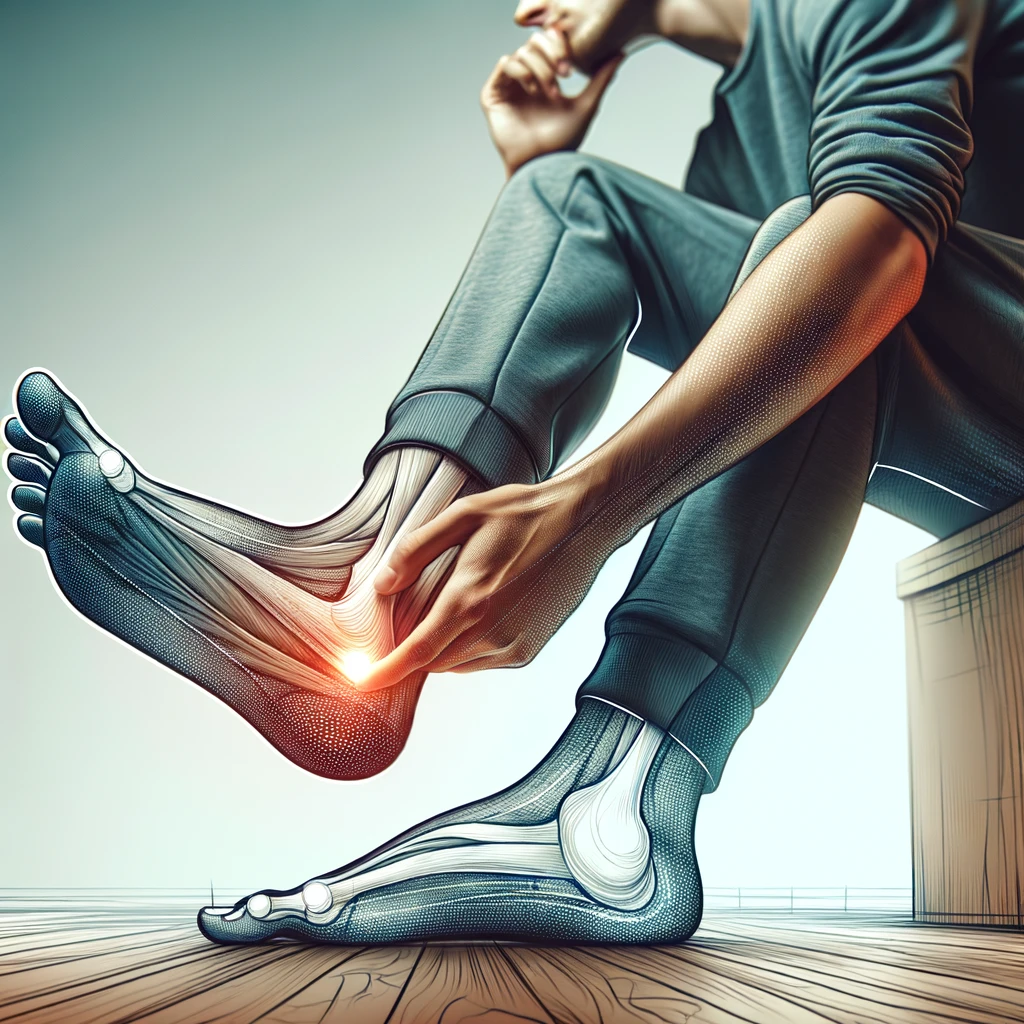
The initial response to plantar fasciitis plays a crucial role in the speed and effectiveness of recovery.
Assessing the Severity of Plantar Fasciitis
Identify the Pain Area: Understanding whether the pain is concentrated around the heel bone or along the arch is crucial.
Evaluate Pain Intensity: Gauge the severity of the pain and its impact on daily activities.
Rest: A Crucial Component
Immediate Rest: Reducing weight-bearing activities can significantly relieve plantar fasciitis pain.
Allow Healing Time: Giving time for the plantar fascia ligament to heal is essential.
Understanding the Role of Rest in Treatment
Rest is not just inactivity but a conscious effort to allow the affected foot to recover.
Bullet List for Effective Rest Strategies:
Assess where and how severe the pain is.
Limit activities that exacerbate the pain.
Give your foot time to heal.
Stretch and Massage FTW
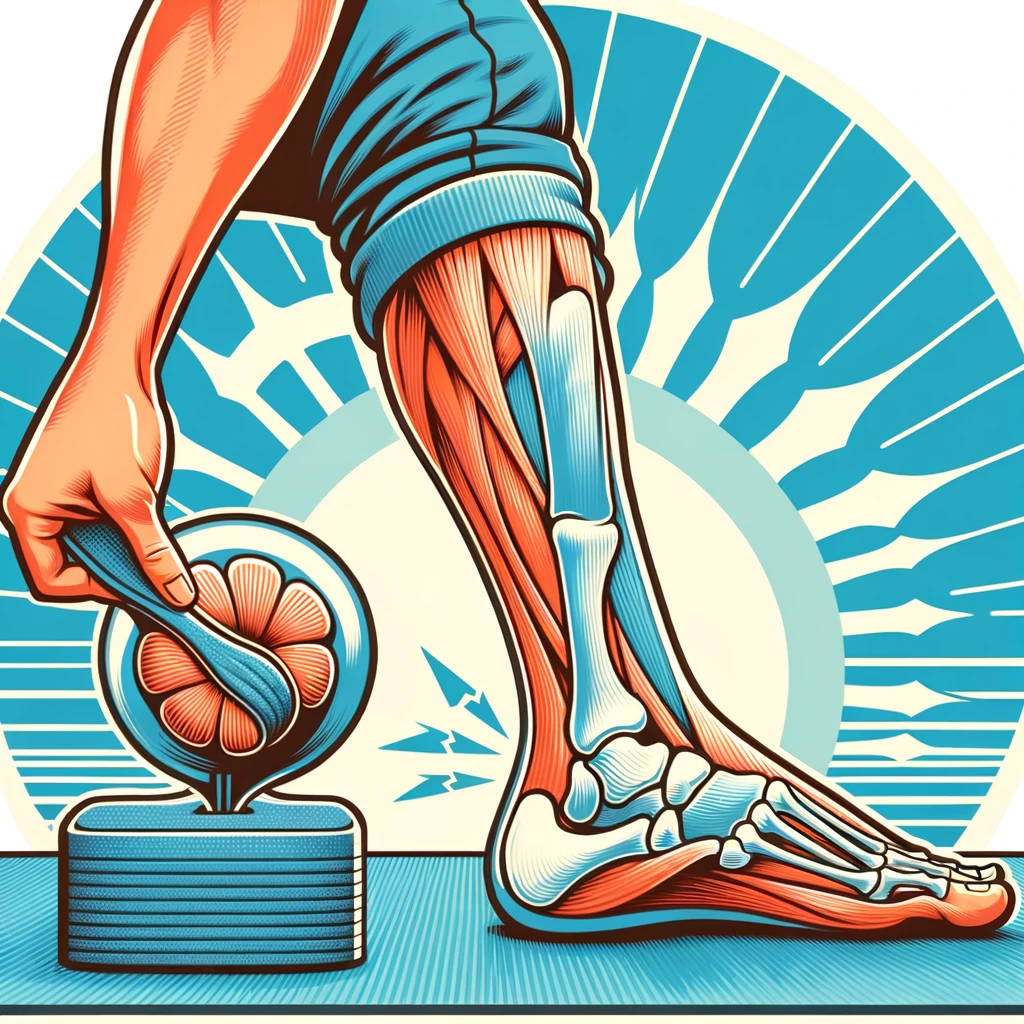
Stretching and massaging are vital techniques in treating plantar fasciitis, offering both immediate relief and long-term benefits.
Effective Stretching for Plantar Fasciitis
Calf Muscle Stretches: Reducing tightness in calf muscles helps alleviate strain on the plantar fascia.
Plantar Fascia Stretch: Stretching the plantar fascia directly can reduce pain and tightness.
Benefits of Massage
Break Down Painful Adhesions: Massaging helps in breaking down adhesions in the plantar fascia.
Enhance Blood Flow: Massage increases blood flow, aiding the healing process.
Incorporating Stretch and Massage into Daily Routine
Regularly performing stretches and massage can prevent plantar fasciitis recurrence and maintain foot health.
Bullet List for Stretch and Massage Techniques:
Perform calf and plantar fascia stretches.
Massage the foot to break down adhesions.
Make stretching and massage a daily routine for foot health.
Understanding Plantar Fasciitis: Why Does It Happen?
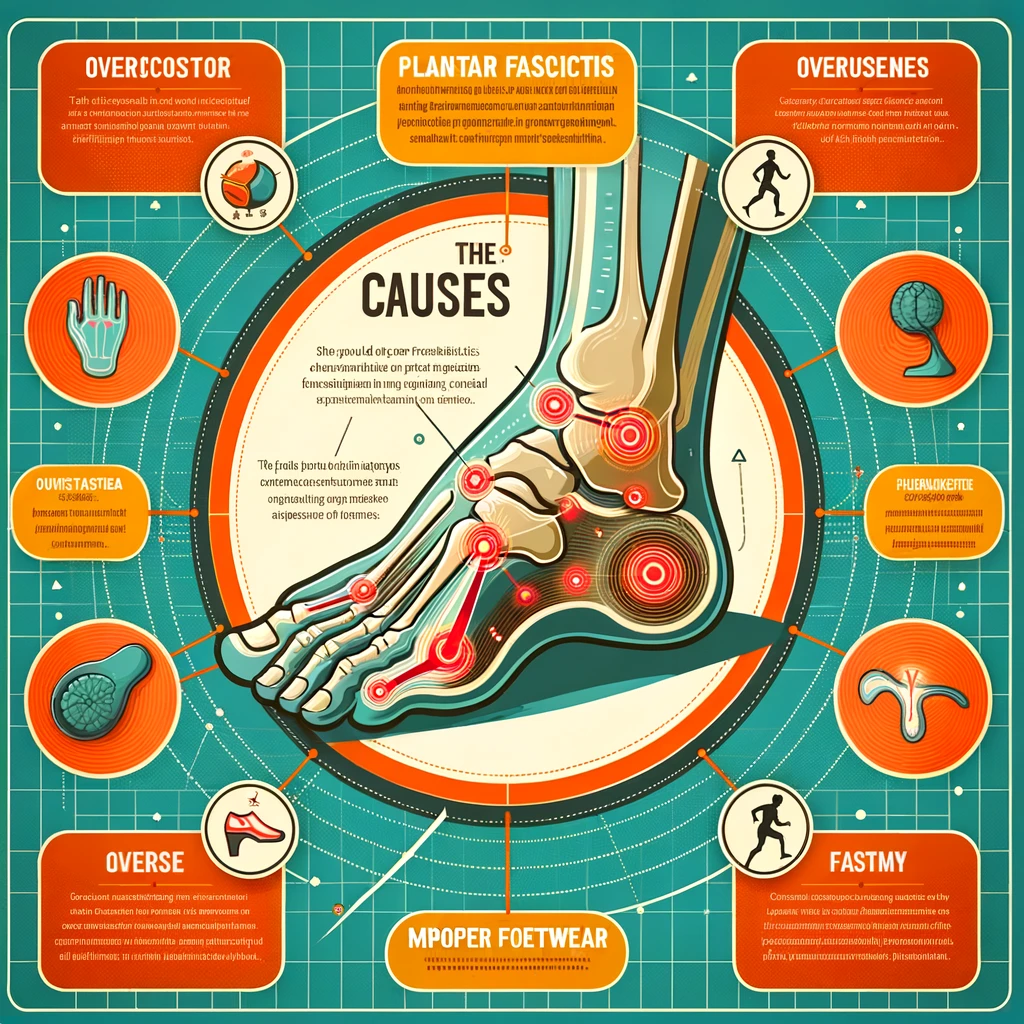
Plantar fasciitis is a common foot condition, marked by heel pain and inflammation of the plantar fascia, the ligament connecting the heel bone to the toes. Understanding why it occurs is essential for effective treatment.
Causes of Plantar Fasciitis
Overuse and Strain: Excessive pressure on the foot, often from activities like running or standing for long periods, can strain the plantar fascia.
Foot Structure Issues: Flat feet, high arches, or even an abnormal walking pattern can contribute to plantar fasciitis.
Risk Factors
Age: Most common between ages 40 and 60.
Certain Exercises: Activities that place a lot of stress on the heel and attached tissue, like long-distance running, ballistic jumping activities, ballet dancing, and aerobic dance.
Lifestyle and Occupational Influences
Prolonged periods of standing or walking on hard surfaces can exacerbate the condition.
Plantar fasciitis typically causes stabbing pain that usually occurs with your first steps in the morning. As you get up and move, the pain normally decreases, but it might return after long periods of standing or when you stand up after sitting.
The condition is more likely to occur in people who are overweight, those wearing shoes with inadequate support, and in those who have suddenly increased the intensity or duration of their physical activity.
Proven Treatments for Rapid Relief in One Week

Treating plantar fasciitis effectively in one week is challenging but possible with a dedicated approach.
Immediate Pain Relief Strategies
Cold Therapy: Use an ice pack on the affected area to reduce inflammation and relieve pain.
Over-the-counter Pain Relievers: Nonsteroidal anti-inflammatory drugs (NSAIDs) like ibuprofen (Advil, Motrin IB, others) and naproxen sodium (Aleve) can ease pain and inflammation.
Long-term Relief Techniques
Stretching Exercises: Regular stretching of the calf muscles and plantar fascia can reduce pain and tightness.
Proper Footwear: Wearing supportive shoes or shoe inserts (called insoles) can help relieve pain and distribute pressure more evenly when you walk.
Physical Therapy
A physical therapist can show you a series of exercises to stretch the plantar fascia and Achilles tendon and to strengthen lower leg muscles, which stabilizes your ankle and heel.
Night Splints
Wearing a splint at night stretches your calf and the arch of your foot, holding the plantar fascia and Achilles tendon in a lengthened position overnight.
Paragraph 3: In most cases, plantar fasciitis improves significantly within a few months of starting conservative treatment. If your plantar fasciitis continues after a few months of conservative treatment, your doctor might inject your heel with steroidal anti-inflammatory medications.
Paragraph 4: If you’re still experiencing pain after trying conservative treatments, your doctor might recommend extracorporeal shock wave therapy.
How long it will take to heal plantar fasciitis?
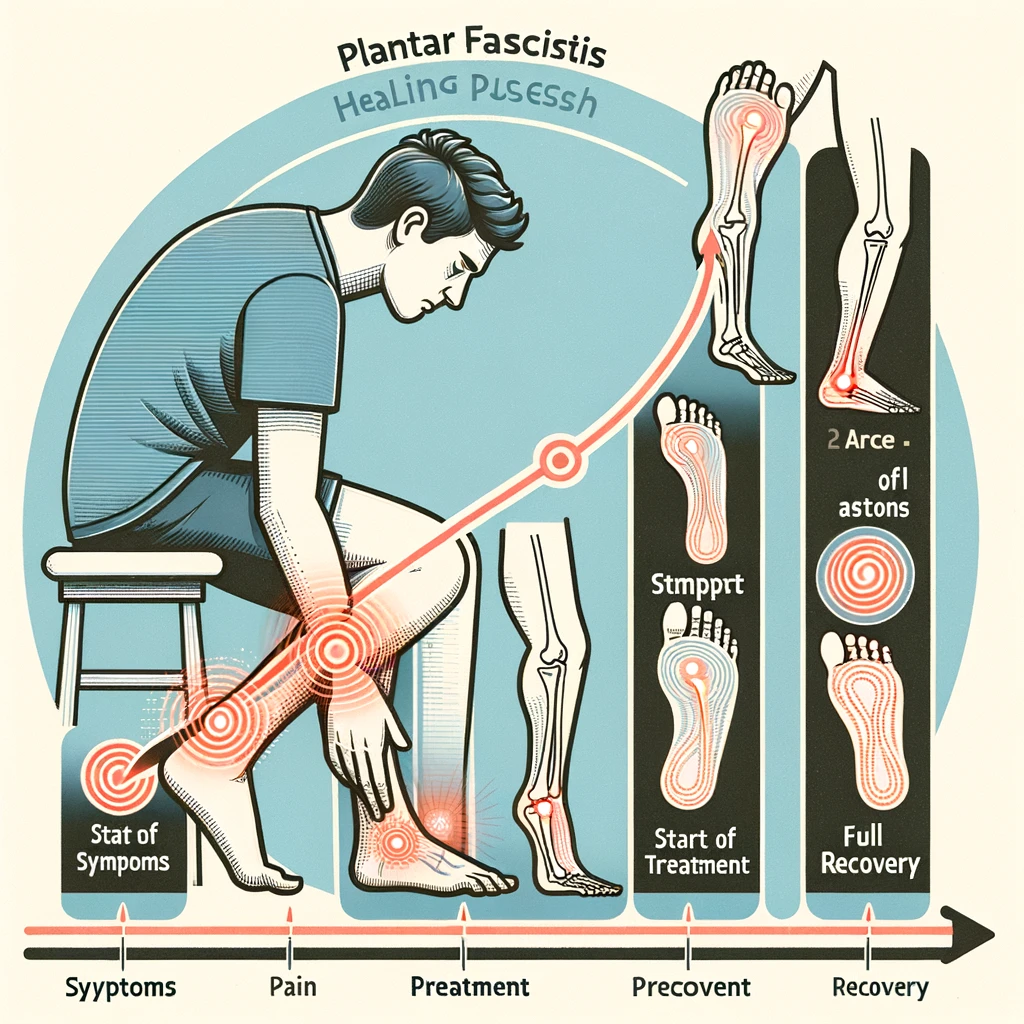
Healing plantar fasciitis varies for each individual, depending on the severity of the condition and adherence to treatment protocols. Typically, with consistent treatment, significant improvement can be noticed within a week. However, complete cure plantar fasciitis may take several weeks or even months. It’s crucial to maintain a routine to heal plantar fasciitis effectively and prevent recurrence.
Supportive Footwear and Orthotics

Supportive footwear is essential in the treatment of plantar fasciitis. Shoes with adequate arch support can greatly alleviate pain and promote healing. Incorporating arch supports, such as custom orthotics or over-the-counter shoe inserts, into your footwear can also be beneficial. These aids provide necessary support to the plantar fascia ligament, reducing stress and aiding in recovery. Wearing proper footwear consistently is key to managing and preventing plantar fasciitis pain.
Choose shoes with good arch support.
Consider custom orthotics for tailored support.
Use over-the-counter arch supports for additional relief.
How to Stretch Your Plantar Fascia

Stretching the plantar fascia is a crucial aspect of treating plantar fasciitis. Gentle stretching exercises can help loosen the tight calf muscles and plantar fascia, providing relief from heel pain.
Ball Stretch: Roll a golf ball beneath your foot for 5 minutes daily.
Calf Stretch: Lean forward against a wall, stretching your calf muscle.
Towel Stretch: Place a rolled towel under the ball of your foot and gently pull towards you.
Cold Therapy and Anti-Inflammatory Remedies
Cold therapy can be an effective treatment for reducing inflammation and pain associated with plantar fasciitis. Applying an ice pack to the affected area for 15-20 minutes several times a day can provide relief. Additionally, over-the-counter anti-inflammatory medications can be used to reduce pain and swelling.
Arch Support Insoles- Your First Line of Defense

Arch support insoles, also called insoles, play a critical role in treating plantar fasciitis. These insoles provide essential support to the arches, distributing pressure more evenly across the foot and reducing the strain on the plantar fascia. For those with flat feet or high arches, insoles can be particularly beneficial.
Select insoles that match your foot’s arch type.
Gradually increase wear time to allow your feet to adjust.
Replace insoles as needed to ensure consistent support.
Which doctor should I consult for plantar fasciitis?
If you’re experiencing symptoms of plantar fasciitis, such as heel pain or discomfort in your foot, it’s advisable to consult a physical therapist or a podiatrist. These specialists have a deep understanding of foot health and are trained in diagnosing and providing plantar fasciitis treatment. They can offer tailored advice on how to cure plantar fasciitis in one week or over a longer period, depending on the severity of your condition.
Podiatrist: Specializes in foot and lower leg conditions.
Orthopedic Surgeon: For severe cases involving the foot’s bone structure.
Physical Therapist: Focuses on pain relief and mobility improvement.
Specific Strengthening Exercises for Plantar Fasciitis

Strengthening exercises are crucial in the journey to cure plantar fasciitis. These exercises help to strengthen the foot, calf muscles, and Achilles tendon, offering long-term relief from plantar fasciitis pain.
Toe Curls: Helps strengthen the foot muscles.
Calf Raises: Targets calf muscle and Achilles tendon.
Toe Flexes: Improves flexibility and strength in the foot.
Strengthen Your Feet With a Washcloth

A simple yet effective way to strengthen your feet and alleviate symptoms of plantar fasciitis is to use a washcloth. This method focuses on the small muscles in your foot, promoting foot health and helping to prevent plantar fasciitis.
Place a washcloth on the floor and use your toes to scrunch it towards you.
Repeat this exercise with each foot, aiming for 10-15 scrunches per session.
Perform this routine daily to build strength in the foot muscles.
Lifestyle Changes

Lifestyle changes can have a significant impact on healing and preventing plantar fasciitis. Maintaining a healthy weight reduces the strain on your feet, and wearing supportive footwear can prevent further injury. Adjusting your exercise routine to include low-impact activities can also help reduce inflammation and heel pain associated with plantar fasciitis.
Maintain a healthy weight to reduce foot strain.
Choose supportive footwear with good arch support.
Opt for low-impact exercises to minimize foot stress.
Incorporating these practices into your daily routine can lead to significant improvement in plantar fasciitis symptoms within one week. Remember, consistency is key to effectively treat plantar fasciitis and ensure lasting relief.
Prevention Strategies for Long-Term Relief

Adopting proactive measures is key to prevent plantar fasciitis and ensure long-term relief. Focus on maintaining foot health with these strategies:
Consistent Stretching Exercises: Dedicate time to stretch the arches and Achilles tendon.
Arch Support: Use shoe inserts or arch supports for daily activities.
Proper Footwear: Select shoes that provide supportive footwear, especially if on your feet for extended periods.
Implementing these preventive strategies can contribute to keeping plantar fasciitis pain at bay and can lead to a more rapid recovery if you’re aiming to cure plantar fasciitis in one week.
Exploring Physical Therapy Options
Physical ther

apy is a critical element of plantar fasciitis treatment, offering a structured approach to alleviate pain. Here’s what to expect:
Personalized Exercise Programs: Tailored to address heel pain and strengthen the foot.
Manual Therapy Techniques: To break down painful adhesions and improve movement.
Education on Foot Biomechanics: Understanding plantar fasciitis helps in managing it effectively.
Physical therapy sessions can help you treat plantar fasciitis with lasting benefits.
Stretch Your Feet With a Book

A book can be an unconventional yet effective tool to stretch and heal plantar fasciitis. Here’s how to use it:
Book Stretch: Stand with the ball of your one foot on a book, letting the heel hang off the edge.
Hold the Stretch: Maintain the position for 30 seconds, feeling the stretch beneath your foot.
Repeat: Do this several times throughout the day, ensuring consistent arch support.
This technique can be a part of a one-week program to cure plantar fasciitis.
Most common questions about quickly treating plantar fasciitis
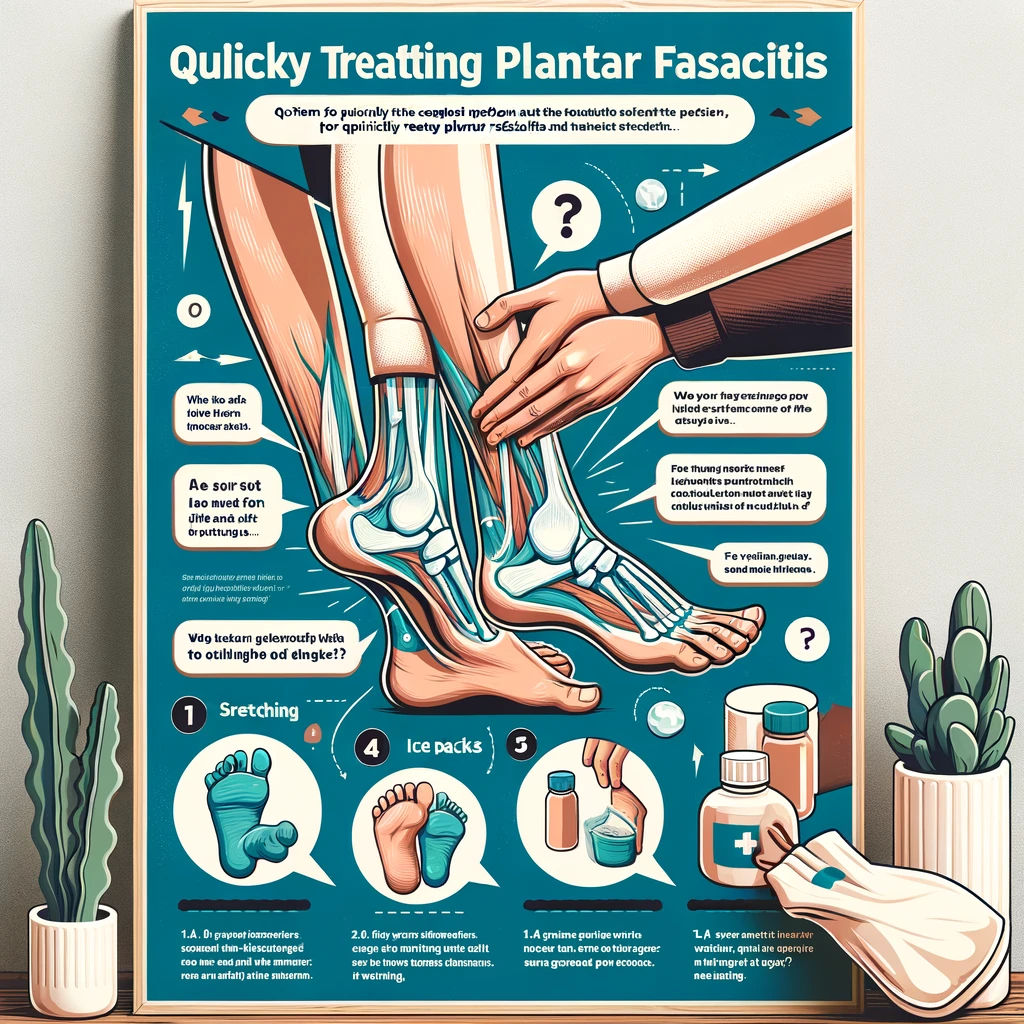
Rapid plantar fasciitis relief hinges on accurate information and effective practices. Common inquiries include:
Can I cure plantar fasciitis quickly? Yes, with diligent care, significant improvement can be seen in one week.
Do night splints help? Yes, night splints maintain an extended stretch of the plantar fascia overnight.
Is cold therapy beneficial? Brief applications of cold therapy can help manage acute plantar fasciitis pain.
For those seeking to cure plantar fasciitis swiftly, understanding and applying these insights is essential.